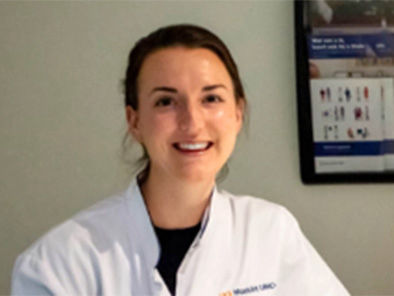

Abstracts Division 2
37. Picking up the threads: Long-term outcomes of the sutured mucopexy: A retrospective single centre cohort study.

Sara Z. Kuiper1, Kayleigh A.M. Van Dam2, Merel L. Kimman3, Litza Mitalas4, Paula Koot1, Jarno Melenhorst4, Sander M.J. Van Kuijk3, Carmen D. Dirksen3, Stephanie O. Breukink1,4,5
1 Department of Surgery, Maastricht University, School of Nutrition and Translational Research in Metabolism (NUTRIM), Universiteitssingel 50, 6229 ER, Maastricht, the Netherlands
2Department of Surgery, Zuyderland Medical Centre
3 Department of Clinical Epidemiology and Medical Technology, Care and Public Health
Research Institute (CAPHRI), Maastricht University Medical Centre, P. Debyelaan 25, 6229 HX Maastricht, the Netherlands
4 Department of Surgery, Maastricht University Medical Centre, Oxfordlaan 10, 6202 AZ, Maastricht, the Netherlands
5Department of Surgery, Maastricht University, School for Oncology and Reproduction (GROW), Universiteitssingel 50, 6229 ER, Maastricht, the Netherlands
Background
The sutured haemorrhoidopexy (SH) is a tissue sparing technique for patients having haemorrhoidal disease (HD) who are refractory to basic and outpatient treatment. Until now limited data are available regarding this technique. This study aimed to assess the short- and long-term safety and efficacy of the SH in patients having HD.
Method
A retrospective study was performed in one medical centre, assessing the following outcomes: number of sutures used; operation time; perioperative complications; postoperative pain; hospital stay; short- and long-term postoperative complications; HD recurrence and re-intervention. Data on current HD symptoms was obtained from a subgroup of patients using a validated patient-reported symptom measure (the PROM-HISS).
Results
Between January 2009 and December 2021 149 patients having HD underwent a SH. 145 patients were included, 70 women (48.3%), with a mean age of 61 years (±12.8). Patients were predominantly diagnosed with grade III (37.2%) HD and the mean follow-up was nine years (5-11). Perioperative complications occurred in four cases (2.8%). In two patients (1.4%) short-term postoperative complications were reported and in seven patients (6.2%) long-term complications. The cumulative efficacy in terms of freedom of recurrence was 88.3% (95% CI, 83.1-93.5) at six months, 80.0% (95% CI, 73.5-86.5) at one year and 67.7% (95% CI, 59.7-75.7) at five years.
Conclusion
The SH is a safe treatment for patients having HD and has a high success rate in terms of freedom of recurrence. Comparative effectiveness to other treatments needs to be evaluated using prospective studies.

NUTRIM | School of Nutrition and Translational Research in Metabolism
NUTRIM aims to contribute to health maintenance and personalised medicine by unraveling lifestyle and disease-induced derangements in metabolism and by developing targeted nutritional, exercise and drug interventions. This is facilitated by a state of the art research infrastructure and close interaction between scientists, clinicians, master and PhD students.
www.maastrichtuniversity.nl/nutrim